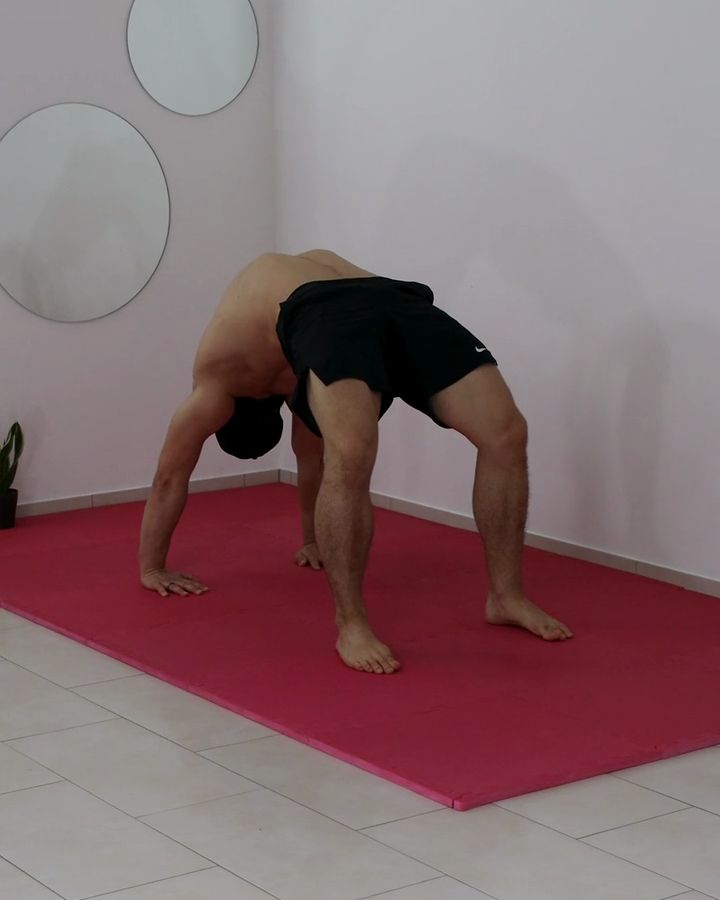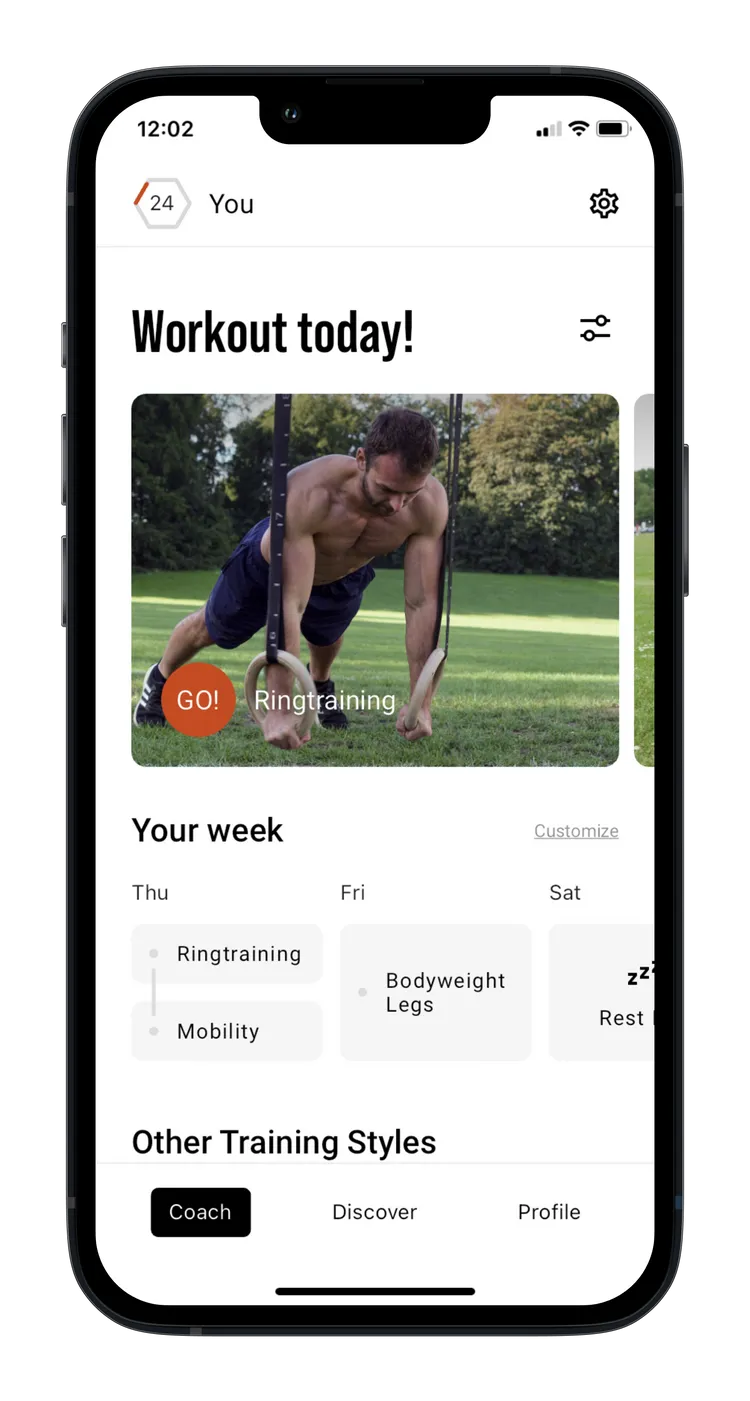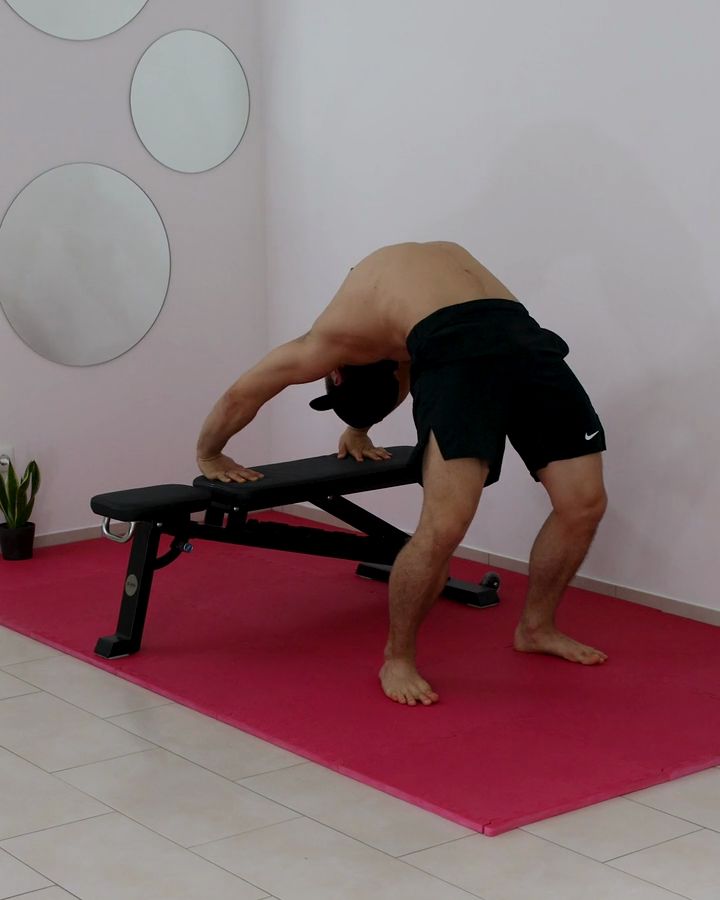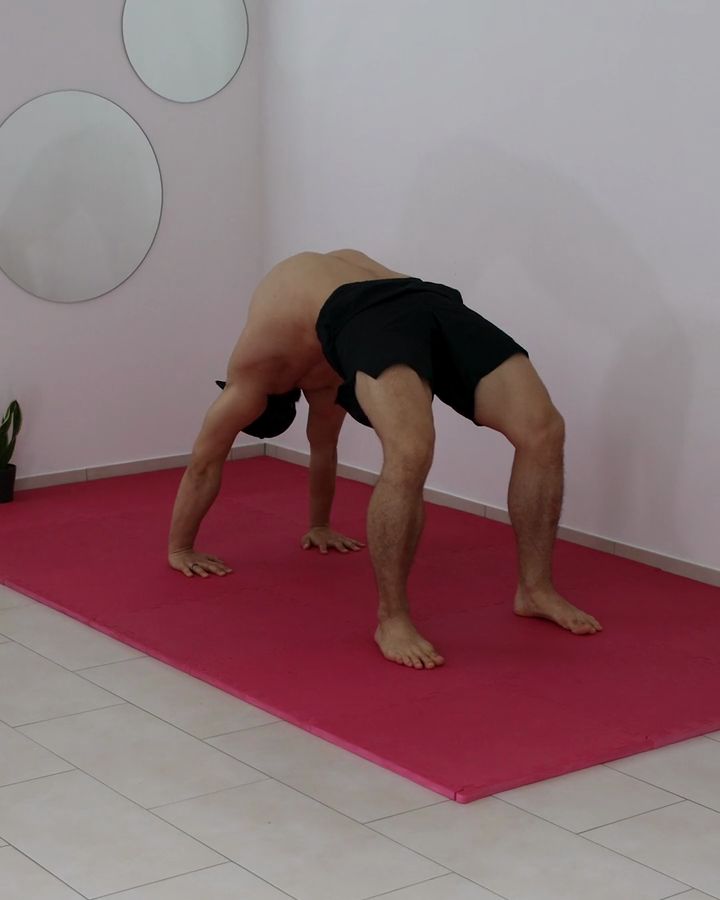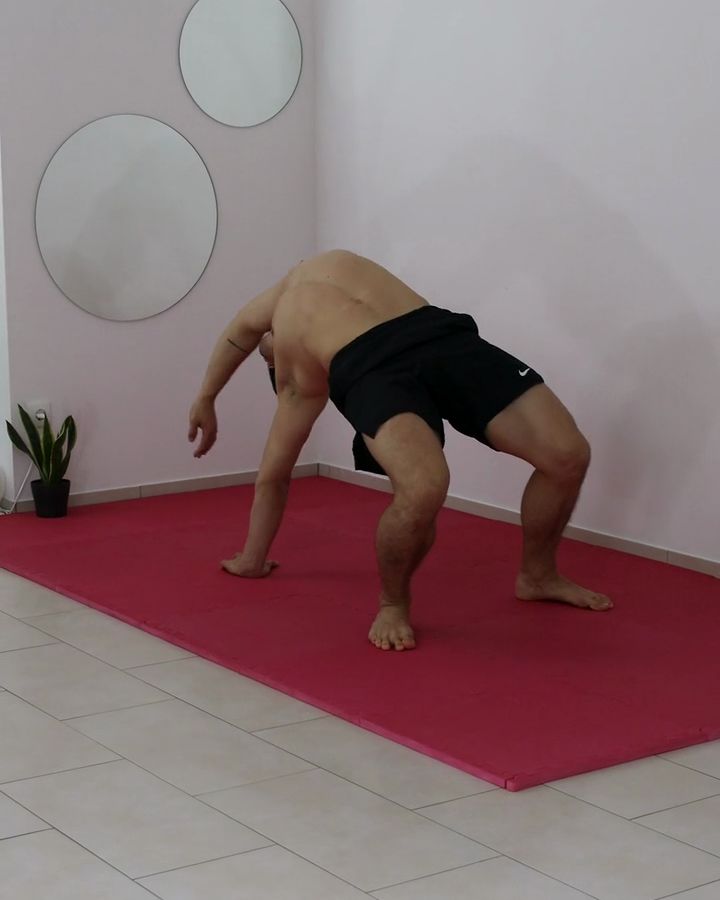Bridge Hold
The bridge, also known as the wheel pose in yoga, is an intense backbend that stretches the front of the body and requires upper body strength. It is an excellent way to enhance the flexibility of your hips and spine. Although it is often considered a beginner exercise, it is complex and requires targeted training to avoid injuries.
Necessary equipment
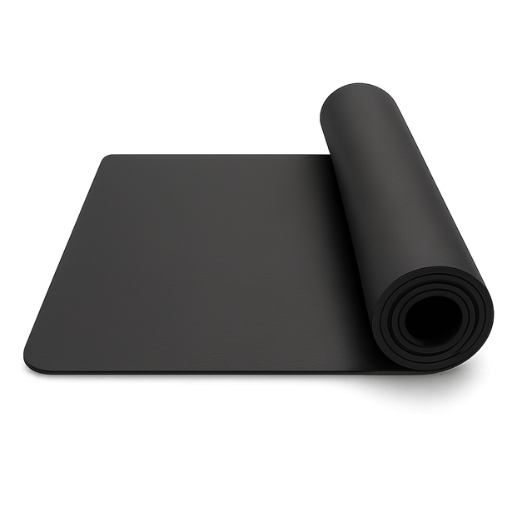
Bridge Hold - the correct execution
- Start lying on your back with your feet up
- Place your hands over your shoulders
- Your fingers point to your feet
- Extend your arms and press into the bridge
- Keep active tension in your buttocks and extend your hips to the max
The exercise Bridge Hold is intended to be used as a mobility exercise.
Which muscles are trained by Bridge Hold?










Primary trained muscles for Bridge Hold
Rear Delts - The rear part of the deltoid muscle, also known as the posterior shoulder, is located at the back of the shoulder. It is responsible for the backward movement of the arm as well as external rotation. This muscle is particularly engaged during activities like rowing or pulling the arm back. The rear shoulder supports posture and helps pull the shoulder blades back, contributing to shoulder stabilization.
Hipflexors - The hip flexors, including the iliacus and psoas major muscles, allow you to bend your leg and torso forward.
Secondary trained muscles for Bridge Hold
Quadriceps - The quadriceps femoris is the large muscle at the front of your thigh. It extends your knee.
Upper Back - The muscles in the upper back, including the trapezius and rhomboid muscles, help move and stabilize your shoulders. They pull the shoulder blades together and support posture.
Alternative variants of Bridge Hold:
Bridge Press Elevated
The Elevated Bridge Press is an effective exercise that focuses on transitioning into the bridge position. Using a box intensifies hip extension and combines it with a push-up movement, making it ideal for advanced practitioners. This exercise puts less strain on the upper body muscles and the spine, making it a safe and preparatory exercise for learning the full bridge pose.
Necessary equipment

Bridge Press Elevated - the correct execution
- Start with hands on a bench
- Arms are bent
- tretch your arms and press into the bridge
- Slowly lower yourself back to the floor
Bridge Press
The Bridge Press is a preparatory exercise for the bridge pose that trains strength and flexibility. This exercise specifically strengthens the back muscles, shoulders, and triceps by lifting the upper body from a lying position. It is ideal for advanced practitioners who want to improve their upper body strength and prepare for more demanding movements like the full bridge.
Necessary equipment

Bridge Press - the correct execution
- Start lying on your back with your feet up
- Place your hands over your shoulders
- Stretch your arms and press into the bridge
- Slowly lower yourself back to the floor
This could also be interesting
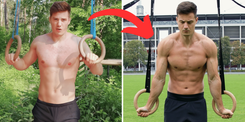
Calisthenics Body Transformation – How to Build a Strong, Lean, and Athletic Physique
Transform your body with Calisthenics! Build muscle, burn fat & achieve a shredded physique with bodyweight training. See real before & after results!

The Best Fitness Apps in 2025: Our Top 10 Recommendations
Don’t miss the best fitness apps of 2025: surprising favorites, free options, and perfect tools for your workouts. Find the ideal app today!
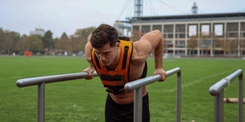
Complete Calisthenics Skills List – 40+ Exercises from Beginner to Pro
Which calisthenics skills should you learn first? And which ones will really help you progress? In this article, you’ll find a complete list of over 40 exercises – from the very basics to the toughest moves for professionals. Each exercise comes with instructions, so you can immediately integrate them into your training.
